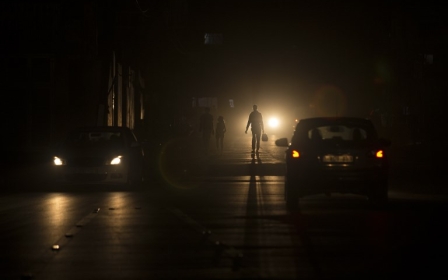Israel threatens new Gaza war if Hamas sabotages barrier plans
Israel said any attempt by Hamas to foil the construction of its underground barrier on Gaza's border would be a "worthy reason" for war, hours after Israeli media released details of the $1bn project.
Eyal Zamir, a major-general in command of Israel's southern forces, said on Thursday that Israel had mapped militant emplacements hidden under civilian sites in Gaza that may be attacked in any new war.
If Hamas chooses to go to war over the barrier, it will be a worthy reason to go to war
- Eyal Zamir, Israel's southern commander
"I think the other side will have to re-evaluate the situation in view of the barrier's construction," the Haaretz newspaper quoted Zamir as saying.
"If Hamas chooses to go to war over the barrier, it will be a worthy reason to go to war. But the barrier will be built."
The unusually detailed threat followed a rocket launch on Tuesday which caused no damage in Israel and went unclaimed by Gazan groups. Israel responded with an air attack on a Hamas facility on Wednesday that medics said wounded seven people.
The military also published on Thursday aerial photographs and coordinates of two Gaza buildings that it said Hamas was using as cover for tunnel networks. One of these, it said, was a Hamas member's family home, linked to a mosque by a secret passage.
"These two targets, as far as I'm concerned, are legitimate military targets, and in the event that a new war begins, anybody in them is endangering himself, his family, and the responsibility will fall on Hamas," Zamir said.
His comments came hours after Haaretz and other Israeli media published details of the barrier project, and its accelerated construction since it was initially announced in September.
The sensor-equipped underground wall is being planted on Israel's side of the 60km border, a counter-measure developed after Hamas fighters used tunnels to blindside its troops during recent Israel-Hamas wars.
The project is to cost $1.1bn and is to be completed within two years, the reports said.
Israel has described it as a territorial counterpart to its Iron Dome short-range rocket interceptor, which has shot down Hamas rockets launched from Gaza.
The Gaza border barrier will cut off any existing tunnels and, with its sensors, detect any fresh digs, Israeli media said.
A new buffer zone within Israel's territory, dozens of metres in width, will afford it extra time to respond by depriving Hamas of targets on the frontier.
Work is in progress at six points along the border, with workers from Spain and Moldova, African asylum seekers and Israelis, Haaretz said.
By October, 1,000 people will be working on the project at 40 sites, 24 hours a day except Saturday, Israel Defence Forces sources told the newspaper.
The current fence will be strengthened and improved, and to its east a six-metre metal wall will be built.
Between the old and new walls several mounds of earth will be built, to enable tank deployment and patrol roads both east and west of the barrier.
Israeli media said on Thursday that the military also planned to build an underwater barrier in the Mediterranean to prevent infiltration from Gaza by sea. Hamas frogmen swam out to raid an Israeli army base up the coast during the 2014 war.
Hamas did not immediately comment on the Israeli statements.
New MEE newsletter: Jerusalem Dispatch
Sign up to get the latest insights and analysis on Israel-Palestine, alongside Turkey Unpacked and other MEE newsletters
Middle East Eye delivers independent and unrivalled coverage and analysis of the Middle East, North Africa and beyond. To learn more about republishing this content and the associated fees, please fill out this form. More about MEE can be found here.






